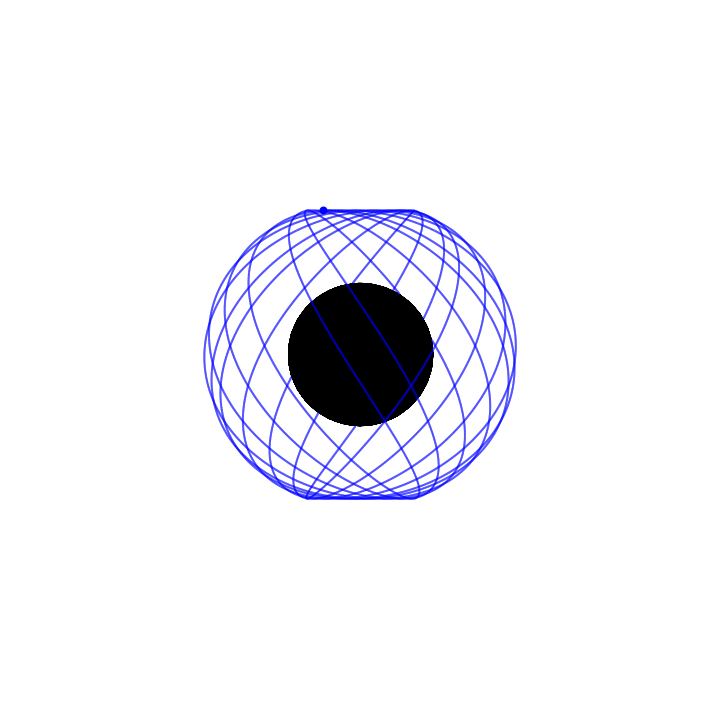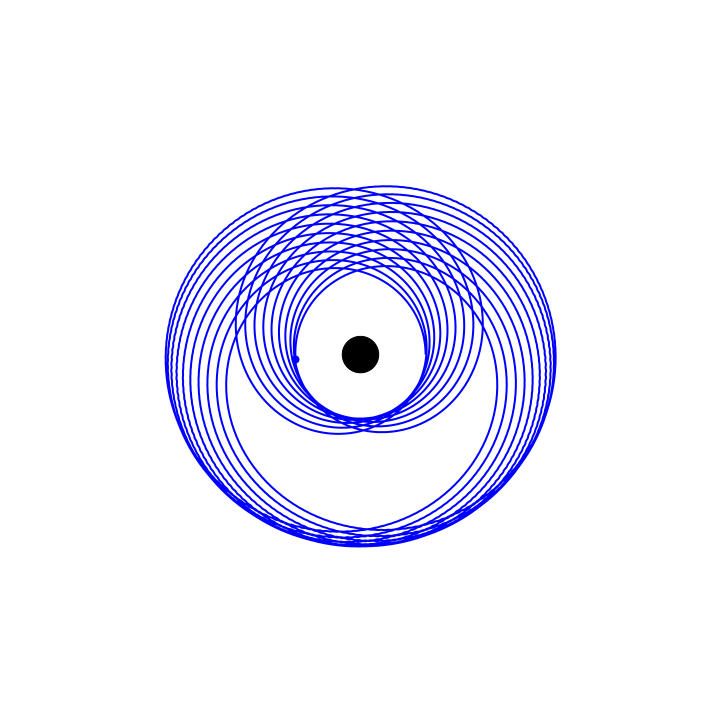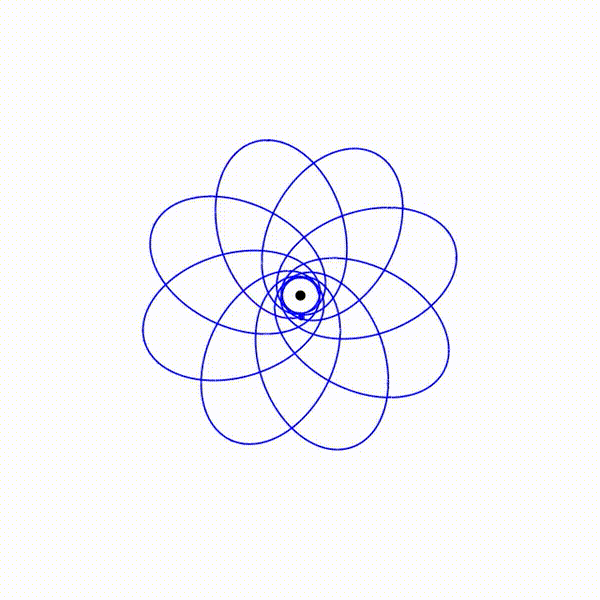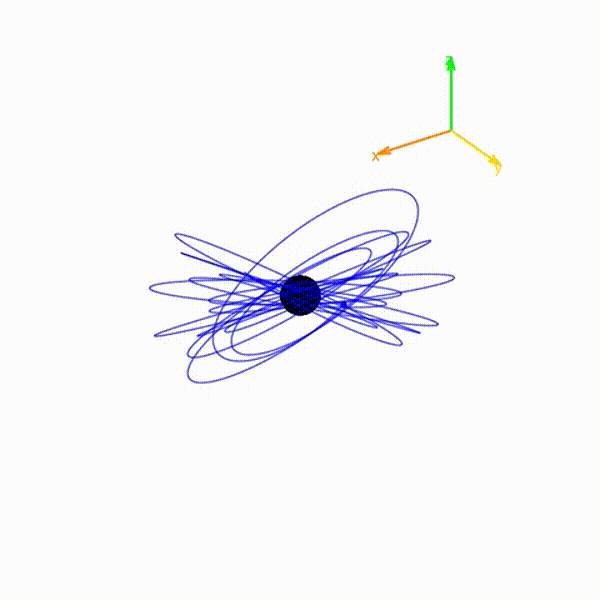EMRI resonances
As most EMRIs evolve, they will eventually
pass through particular
orbital configurations known as resonances.
Resonances occur when at least two frequencies of
motion form a (relatively prime) integer ratio.
Resonances that form
between the azimuthal motion and the other orbital
frequencies (i.e., \(r\phi\)- and
\(\theta\phi\)-resonances) lead to the anisotropic
radiation of gravitational waves, leading to kicks to
an EMRI's center of mass. On the other hand,
resonances that form between the radial and polar motions
of the system (i.e., \(r\theta \)-resonances)
will enhance or diminish the rate at which
an EMRI radiates away energy and angular momentum
through gravitational waves. This latter effect will
have a strong impact on EMRI gravitational wave signals.
Therefore, it is important to improve our models of
EMRIs as they pass through \(r\theta\)-resonances,
because they can hinder the ability of LISA to
accurately detect and characterize EMRI signals.
For more information about my research on EMRI
resonances, see my latest contributed talks
here.
Quasinormal bursts (QNBs)
QNBs are faint, periodic
high-frequency oscillations that appear
in EMRI waveforms. These oscillations arise in an EMRI when its smaller body follows a highly eccentric orbit
that brings it
through successive close encounters with the more massive
primary black hole. QNBs get their name because they
can be mapped
to the quasinormal mode frequency spectrum of rotating
Kerr black holes. Thus they are a physical signal
produced
by the small body effectively "ringing" the larger
black hole and the surrounding spacetime by its
repeated periaspsis passages.
For more information about my research on EMRI
QNBs, see my latest paper
here.



